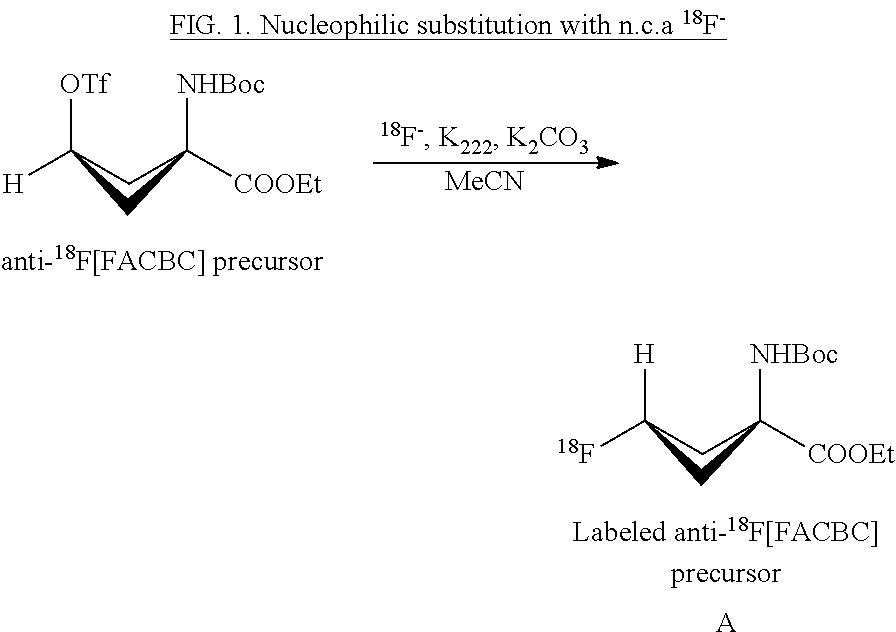Borosilicate glassware and silica based QMA's in 18f nucleophilic substitution: influence of aluminum, boron and silicon on the reactivity of the 18f- ion
- Summary
- Abstract
- Description
- Claims
- Application Information
AI Technical Summary
Problems solved by technology
Method used
Image
Examples
examples
[0014]The invention is further described in the following examples, which is in no way intended to limit the scope of the invention.
[0015]The invention is illustrated by way of examples in which the following abbreviations are used:[0016]hr(s): hour(s)[0017]min(s): minute(s)[0018]ml: milliliter[0019]μg: microgram[0020]mg: milligram[0021]ppm: parts per million[0022]AlCl3: aluminum chloride[0023]KBO2: potassium Borooxide[0024]NaSiO3: sodium silicon oxide[0025]RT: room temperature[0026]Me: methyl[0027]C: celcius
[0028]2. Materials and Methods
[0029]2.1. General
[0030]Enriched [18O]-water 98%, was obtained from Taiyo Nippon Sanso. Acetonitrile, super purity solvent from Romil, was used for eluent solutions in table 4. Acetonitrile 99.8%, prep solv, obtained from Merck (Darmstadt, Germany) was used everywhere else relevant. Kryptofix 2.2.2 and K2CO3 (Merck), Na2SiO3*9H2O (Acros Organics), KBO2*H2O (Johnson Matthey), and AlCl3*6H2O (Fluka) were all used without further work-up. Water for inj...
PUM
 Login to View More
Login to View More Abstract
Description
Claims
Application Information
 Login to View More
Login to View More - R&D
- Intellectual Property
- Life Sciences
- Materials
- Tech Scout
- Unparalleled Data Quality
- Higher Quality Content
- 60% Fewer Hallucinations
Browse by: Latest US Patents, China's latest patents, Technical Efficacy Thesaurus, Application Domain, Technology Topic, Popular Technical Reports.
© 2025 PatSnap. All rights reserved.Legal|Privacy policy|Modern Slavery Act Transparency Statement|Sitemap|About US| Contact US: help@patsnap.com

